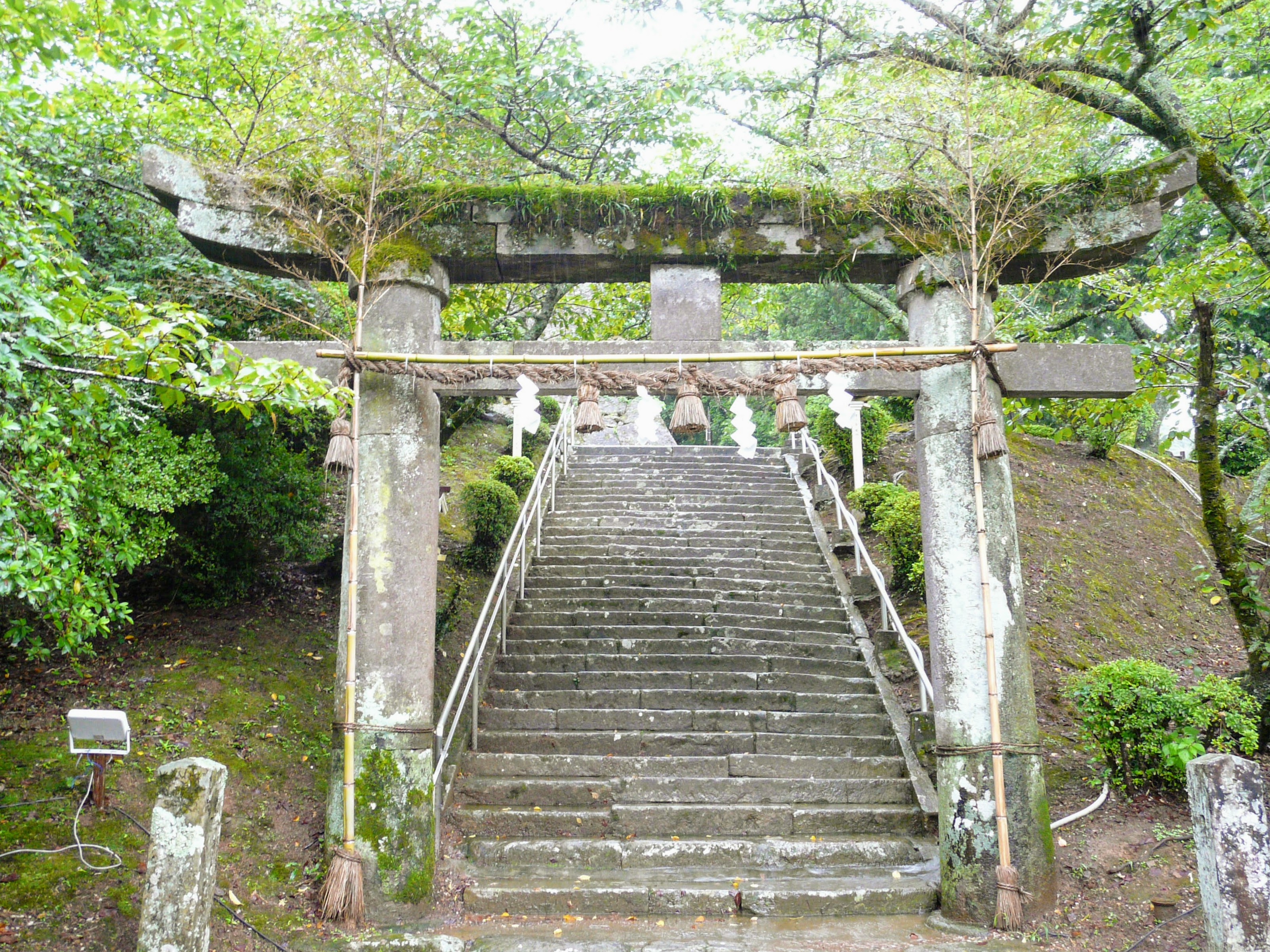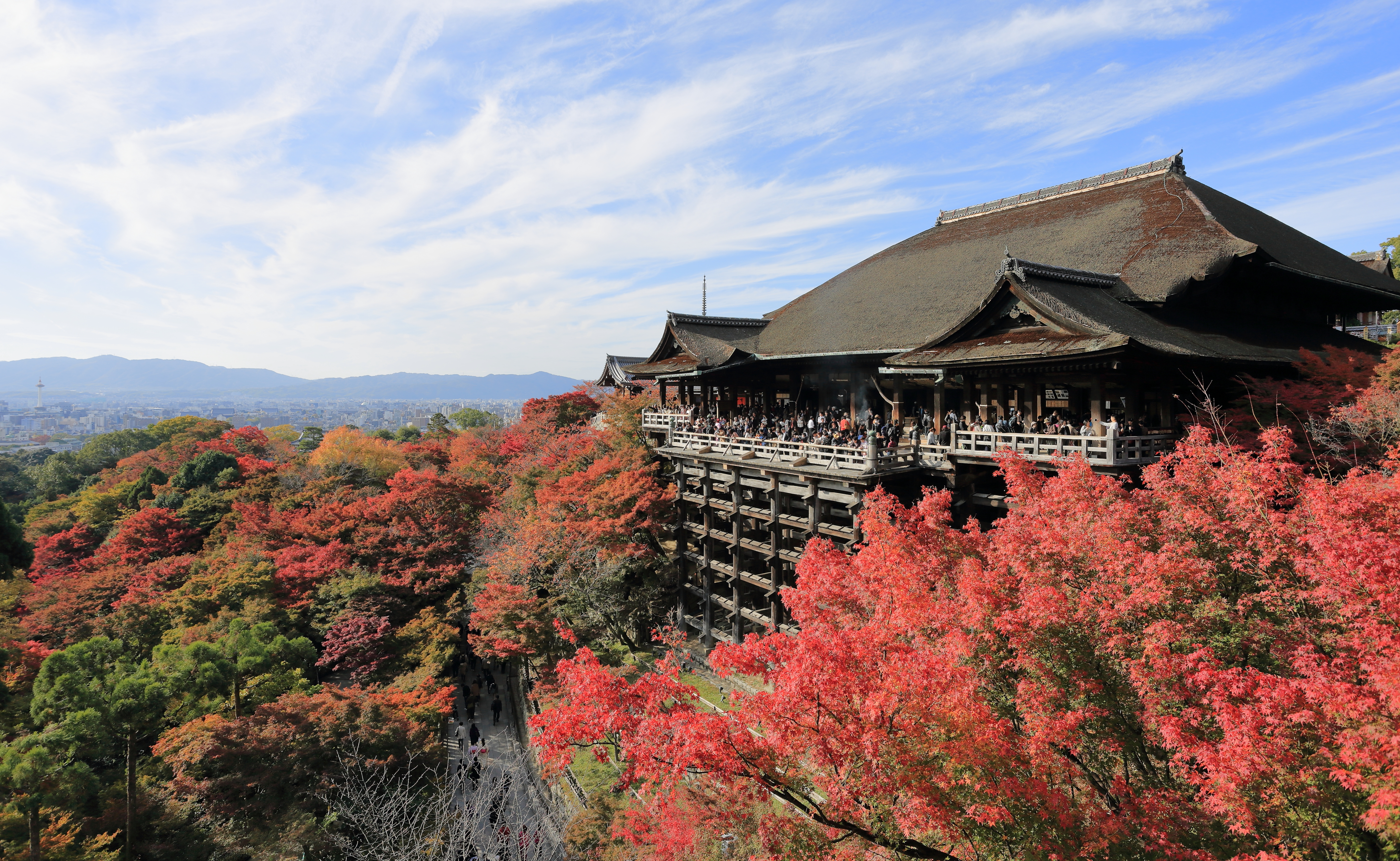Exhibit Overview
The exhibition Portals and Path in Japanese Religious Architecture examines how religion, sacred places, beliefs influence architecture. This project first started with an image of a palace, temple, and a single torii gate. Soon after I realized that I was interested in religious architecture and what they represent. The two main religions in Japan are Buddhism and Shinto, and structures built for the two religions are different but for the same purpose, a zin place for people to worship. Japanese religious architecture is similar to Chinese religious architecture as they both share many similar features, especially the structures which are dedicated to Buddhism.
A common theme for the exhibition is the use of architecture as transformative space, transforming a space from mundane to a more sacred space for religious purposes. In addition to the architecture being used as a symbol of transformative space, the use of height, in many cultures the gods and goddesses are high up in the sky. Building higher up to reach the sky could help one feel closer to their religion.
Torii’s are some of the most iconic Japanese architecture structures, it’s something that has been replicated in many western countries and is iconic. The three torii gates images in this exhibit are all different: one is placed in a lake, one is made of stone and the other one is a row of gates. The structures are all different but they all feature the same concept and purpose. Torii gates are traditionally made of wood or stone. Temples are Buddhist structures and oftentimes people would visit them to pay respect to the Buddha. Different temples have different structural characteristics and features. Most temples look similar to one another but they are all made from wood. The roof of a temple is usually a hip and gable roof, which is standard for Buddhist structures. The two temples chosen for this exhibit are the Phoenix Hall and the Kiyomizu-dera temple. Both are famous Buddhist temples in Japan, both are similar to one another as they serve the same purpose but are different at the same time.
Hakone Shrine Torii Gates

Subject: Architecture
Title: Hakone Shrine Torii Gates
Location: Lake Ashi, Kanagawa Perfecture, Japan
Creation date: 1993
Author: Dang Son
Photo Taken: July 23 2015
The shrine is located in Takeo Shrine, Takeo, Japan. This shrine is different compared to other shrines in Japan. The Shinto shrine is in Mount Hakone, and this torii is located on Lake Ashi, which is the lake near Mount Hakone. This torii has the features of typical traditional torii’s, the color red. Torii represents a sacred place, a transition from mundane to a sacred place. The torii gate has a stone path paved in the middle leading to the lake; this represents the lake as a sacred place. Torii gates often represent safety, health, and long life. This torii looks like it’s floating in the water, fishermen who would navigate their boats through the torii before coming on land in hopes of long life, health, and safety. There are a number of torii gates that are on lakes. This one is special because there is a path going in front of the torii.
Takeo Shrine Torii Gates

Subject: Architecture
Title: Takeo Shrine Torii Gates
Creation date: Takeo, Japan
Author: Naokiji
Photo Taken: Aug 12, 2021
The Takeo Shrine is different from the other, the main attraction of this shrine is a tree. The tree at the Takeo Shrine is sacred to many as many go there to pray for a good marriage and family. The Sacred Tree of Takeo is over 3000 years old and is also the 7th largest tree in Japan. In addition, the base of the tree trunk is hallowed, with a shrine for the priest. Since the shrine is a sacred place of worship, a torii is the transmission of mundane to a sacred place. This torii is different from the others, as most torii are made of wood, but this one is made from stone. Stone is a much harder material to carve and put up. The torii gate leading up to the shrine represents the transition of mundane space to more of a sacred place, and since the path is leading up to the shrine which is at a higher elevation, this could mean it brings one closer to the religion.
Fushimi Inari JInja Torii Gates

Subject: Architecture
Title: Fushimi Inari JInja Torii Gates
Location: Kyoto, Japan
Author: Naokiji
Photo Taken: Aug 12, 2021
Torii gates are usually stand-alone, but this path is under a collection of torii gates. There are dozens of torii gates above this path, leading into the sacred mountain Inari. This is an Inari shrine dedicated to the Shinto god of rice. Rice is an important crop to many Asian cultures as many dishes are made of rice. The temple, home to the Shinto rice god, is a sacred place, and the path of dozens of torii gates transforms the space, making the path purer as people enter the temple. This collection of torii gates created a path, unlike the other torii gates, this collection of torii gates could symbolize the importance of the Shinto shrine and the mountain it is on. The collection of torii gates leading to a Shinto shrine shows the purity and importance of the temple along with the path. There are not many other shrines with a collection of thousands of gates. The Fushimi Inari Jinja torii is like other torii, made of wood and covered with red paint. Red in many Asian cultures is associated with good luck. However, there are characters inscribed on the torii that are not common. The Japanese characters are similar to Chinese characters.
Phoenix Hall, Byodo-in

Subject: Architecture
Title: Phoenix Hall, Byodo-in
Location: Kyoto Prefecture, Japan
Creation date: 1052
Author: Martin Falbisoner
Photo Taken: Nov 18, 2016
When the budding was built the layout of the building was meant to look like the shape of a Phoenix which represents rebirth. The architecture of Phoenix Hall was unlike other Buddhist Temples at the time and inspired others to replicate the temple. In the early 1000s, it was not common to make copies of buildings or replicate, but the Phoenix Hall was replicated multiple times in the next couple hundred years. There are images of the layout of When the building was built, the layout of the building was meant to look like the shape of a Phoenix which represents rebirth. Phoenixes represent immortality, rebirth, and resurrection after death. The temple has two wing corridors that are identical to one another representing the wing allowing it to seem like it can fly high. Phoenix Hall is one of the well-known temples as the temple unlike other Buddhist Temples at the time and inspired others to replicate the temple. In the early 1000s, it was not common to replicate other buildings, but the Phoenix Hall was copied multiple times in the next couple hundred years. When the temple was first built it was the residential hall, but in 1051 Yorimichi turned the building into a temple and a place of worship. The manmade lake in front of the temple makes it harder to reach the temple as access is reduced to two small bridges. The bridge takes one into a sacred temple which has a history of 900 years old. The man-made lake made the temple much harder to access making it seem more sacred.
Kiyomizu-dera Temple

Subject: Architecture
Title: Kiyomizu-dera Temple
Location: Kyoto Perfecture, Japan
Creation date: 1663
Author: Dang Son
Photo Taken: Nov 16, 2016
The Kiyomizu-dera Temple translates to Pure Water. The temple is located on Mount Otowa, Kyoto Japan. This is one of the World UNESCO world heritage sites, founded in 778. The structure has gone through multiple renovations over the years. The temple sits on the top of Mount Otowa providing a great view of the city of Kyoto. Kiyomizu-dera translates to Pure Water. The temple is located on Mount Otowa, Kyoto Japan. This is one of the World UNESCO world heritage sites, founded in 778. The structure has gone through multiple renovations over the years. The temple sits on the top of Mount Otowa providing a great view of the city of Kyoto. The temple is best known for its wooden stage that hangs off a 13-meter cliff; wood scaffolding is used as a support temple since it is sitting off the cliff. The temple located on top of a mountain gives worshippers a higher vantage point, transforming them to feel closer to Buddha as its higher up. The “wooden stage” is built without a single nail, since it’s a Buddist temple, perhaps reflecting the Buddhist ideals against violence. Nails and using human energy and effort is an act of violence as it’s putting holes into something organic such as wood.
Images
Falbisoner, Martin. “Kiyomizu-Dera, Kyoto, November 2016 -01.Jpg.” Wiki Commons, 16 Nov. 2016, commons.wikimedia.org/wiki/File:Kiyomizu-dera,_Kyoto,_November_2016_-01.jpg.
Falbisoner, Martin. “Phoenix Hall, Byodo-in, November 2016 -01.Jpg.” Wiki Commons, 18 Nov. 2016, commons.wikimedia.org/wiki/File:Phoenix_Hall,_Byodo-in,_November_2016_-01.jpg.
Liu, Tianshu. “箱根神社 平和の鳥居, 箱根町, Japan (Unsplash).Jpg.” Wiki Commons , 18 Apr. 2017, commons.wikimedia.org/wiki/File:%E7%AE%B1%E6%A0%B9%E7%A5%9E%E7%A4%BE_%E5%B9%B3%E5%92%8C%E3%81%AE%E9%B3%A5%E5%B1%85,_%E7%AE%B1%E6%A0%B9%E7%94%BA,_Japan_(Unsplash).jpg.
Morin, Barsile. “Torii Path with Lantern at Fushimi Inari Taisha Shrine, Kyoto, Japan.jpg.” Wiki Commons, 10 June 2019, commons.wikimedia.org/wiki/File:Torii_path_with_lantern_at_Fushimi_Inari_Taisha_Shrine,_Kyoto,_Japan.jpg.
Naokijp. “Takeo Shrine Scound Torii Gate.jpg.” Wiki Commons , 12 Aug. 2021, commons.wikimedia.org/wiki/File:Takeo_Shrine_scound_Torii_gate.jpg.
Work Cited
Buchanan, Daniel C. “Some Mikuji of Fushimi Inari Jinja.” Monumenta Nipponica, vol. 2, no. 2, Sophia University, 1939, pp. 518–35, https://doi.org/10.2307/2382483.
Metevelis, Peter. “‘Torii’: Japanese Shrine Gates A Call for Cooperation.” Asian Folklore Studies, vol. 47, no. 2, Nanzan University, 1988, pp. 311–15, https://doi.org/10.2307/1178281.
Orientalarchitecture.com. “Byōdō-in Temple – 平等院, Kyoto, Japan.” Asian Architecture, www.orientalarchitecture.com/sid/202/japan/kyoto/byodo-in-temple.
Screech, Timon. “Encoding ‘The Capital’ in Edo.” Extrême-Orient Extrême-Occident, no. 30, Presses Universitaires de Vincennes, 2008, pp. 71–96, http://www.jstor.org/stable/42635808.
Stavros, Matthew, et al. “The Shōkokuji Pagoda: Building the Infrastructure of Buddhist Kingship in Medieval Japan.” Japanese Journal of Religious Studies, vol. 45, no. 1, Nanzan University, 2018, pp. 125–44, https://www.jstor.org/stable/26854473.
“The Sacred Tree.” TeamLab, www.teamlab.art/w/sacredtree/.
Yiengpruksawan, Mimi Hall. “The Phoenix Hall at Uji and the Symmetries of Replication.” The Art Bulletin, vol. 77, no. 4, [Taylor & Francis, Ltd., College Art Association], 1995, pp. 647–72, https://doi.org/10.2307/3046141.